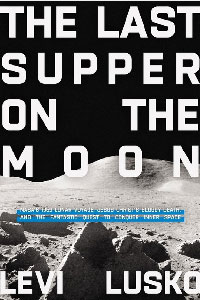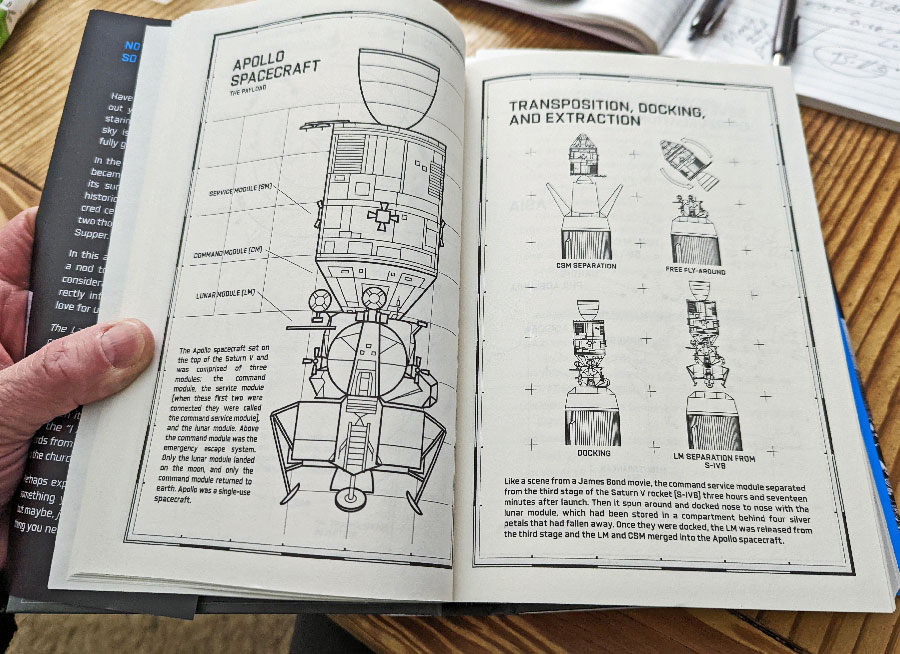As NASA prepares to return to the moon after 50 years, there’s renewed interest in space travel, in visiting Mars, and even setting up habitation on the moon.
The last NASA moon flight was Apollo 17 in 1972. But the mission that went down as a landmark in history was the flight of Apollo 11, which sent the lunar lander “Eagle” to the surface of the moon in 1969.
Neil Armstrong was the first human to set foot on the moon, but Edwin “Buzz” Aldrin was the first human to take Communion on the moon. He did it personally and quietly, without broadcast on the open NASA channel, right there in the Eagle. So, in a sense the first footprints on the moon were dedicated to Jesus, who the Bible explains created the moon and everything else in space:
“Christ is the visible image of the invisible God. He existed before anything was created and is supreme over all creation, for through him God created everything in the heavenly realms and on earth.” (Colossians 1:15-16 NLT)
Pastor and author Levi Lusko is focusing on what God has arrayed in outer space in a new book project, “The Last Supper on the Moon,” which points to “the fantastic quest to conquer inner space.” The stuff that makes up who and what we are.
"This book’s not about space. It’s about Jesus."
“And I think that God sort of intends for us to see the moon as a sign of his covenant. In fact, the Bible describes the moon as God’s faithful witness (Psalm 89:37) that he’s going to do what he said. And the moon is very consistent. It’s always there. Whether you can see it or not, it’s always there…and so like that, God is faithful and we can count on the rhythms of his love and grace and mercy.” Podcast

We reflect the Son
Lusko reminds that, “The moon is bright and it’s beautiful, but it doesn’t have any light of its own. All the light comes from the sun. And that’s kind of like our job (being moon-like) at work and at school – even in hard, difficult assignments – we’re meant to shine, but we don’t have to come up with light, because the light comes from God.”
Using the dark side of the moon – which never shows itself to us on earth - as an example, Lusko writes, “I find it extremely symbolic that the moon, like so many of us, keeps the most damaged (and interesting) side out of sight. Mark Twain once said, ‘Everyone is a moon, and has a dark side which he never shows to anybody.’”
But Lusko reminds us that “Your shape and size and personality type and spiritual gifts and life experiences all have been carefully calibrated and crafted to create your calling. Even the painful situations you have faced and the mistakes you have made are meant to be redeemed and worked into the tapestry of your story.”
Purpose in Life
“Look at David in Psalm 8 who said, ‘When I consider the heavens, the work of your hands - the sun, the moon, the stars – what is man that you are mindful of him?’ So, it’s human nature to look up and go ‘Wow, look at all that! Look at the shooting star, look at the Milky Way, look at the Aurora Borealis’ and then naturally to say, ‘Who am I? Where’s my place in this universe?’ And then, of course, in Jesus, we have an answer.”
“I’m just so grateful that we don’t have to guess where our place is and we don’t have to ask what’s going to happen to us when we die because Jesus has given his life for us.
"It’s amazing that man left earth and went to the moon, but even better is that the Son of God left heaven and came to this earth.”
Lusko explains that “the whole space race, the moon shot – all of that – is a great metaphor to kind of using new language to explain the Gospel.” He adds, “I think if we’re honest, we look at the life we’re living and the life we wish we were living, and it almost seems like a blessed life is out of reach – like the moon is. And to bridge the gap between here and there is the Cross. And so, I want to help people listen to Jesus. This book’s not about space. It’s about Jesus. I’m using space as a metaphor to point people to the one who actually can bridge the gap from where we are today…and where we’re meant to be.” And that’s what the pastor does in “The Last Supper on the Moon.”

Podcast preview
In our complete podcast interview below, Pastor Lusko shares many of the positives the missions to space have brought. For example, the Memory Foam Mattress is a direct result of technology developed to absorb the shock of spacecrafts’ re-entry to earth’s atmosphere and splashdown in the ocean. And pacemakers and defibrillators we have today are the result of NASA lunar technology. There’s a lot more Lusko shares, give a listen.

